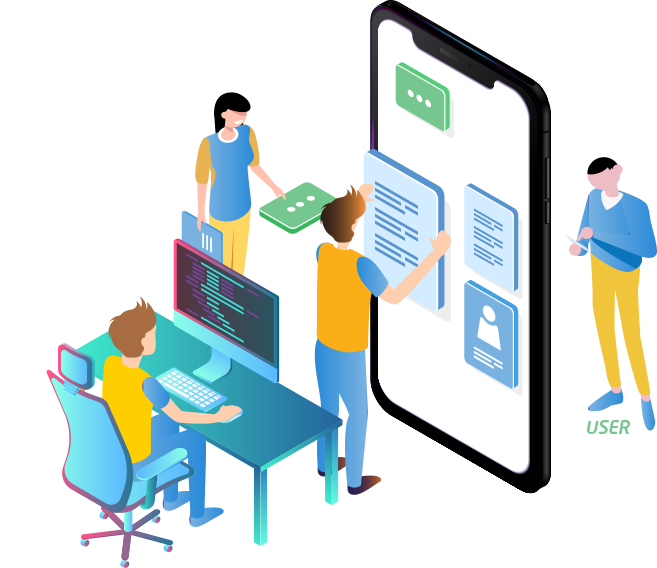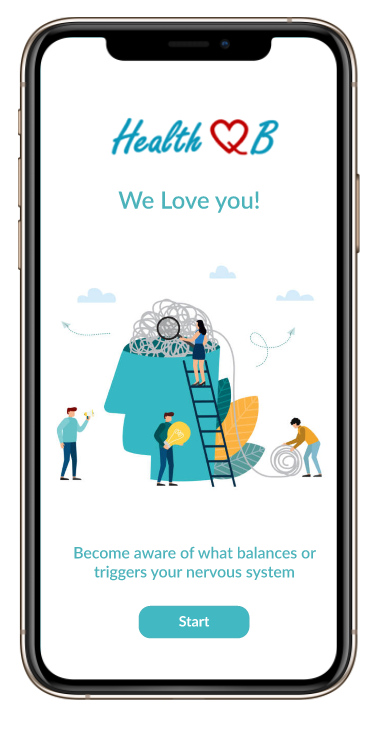HealthQb
IOS & Android versions are available through AppStore and Googleplay
Chronic pain is a significant health issue that negatively affects the quality of life of many individuals around the world. It is estimated that 1 out of 3 individuals will experience chronic pain at some point in life. It seems that there is no effective diagnostic tool that (1) assesses the biopsychosocial elements of chronic pain such that a multi- and inter-disciplinary provider care team specific to the patients’ needs can be established; and (2) monitors patient outcomes using biometric data indicating the autonomic nervous system in response to provider care and self-directed interventions.
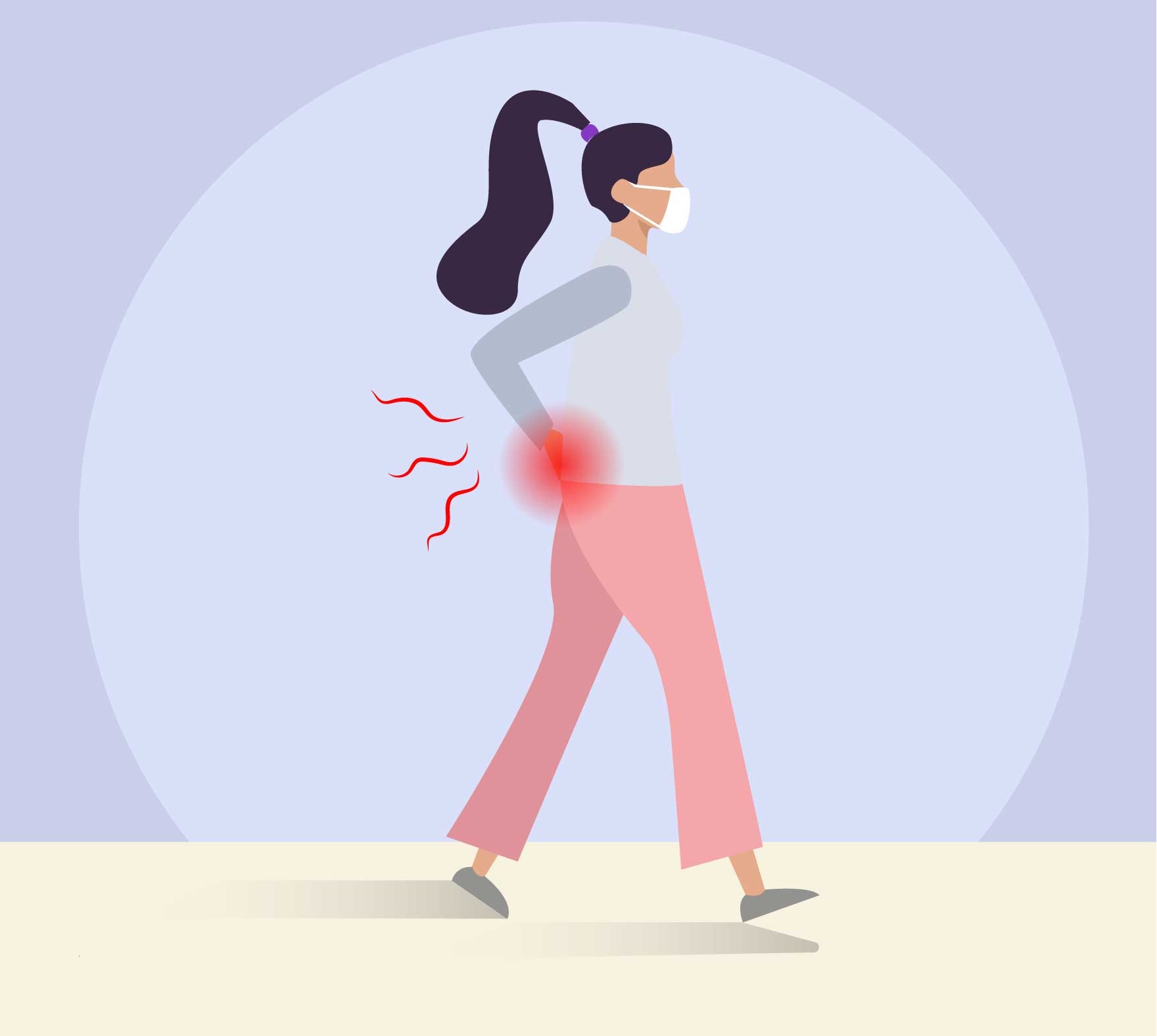
User Research & Solution
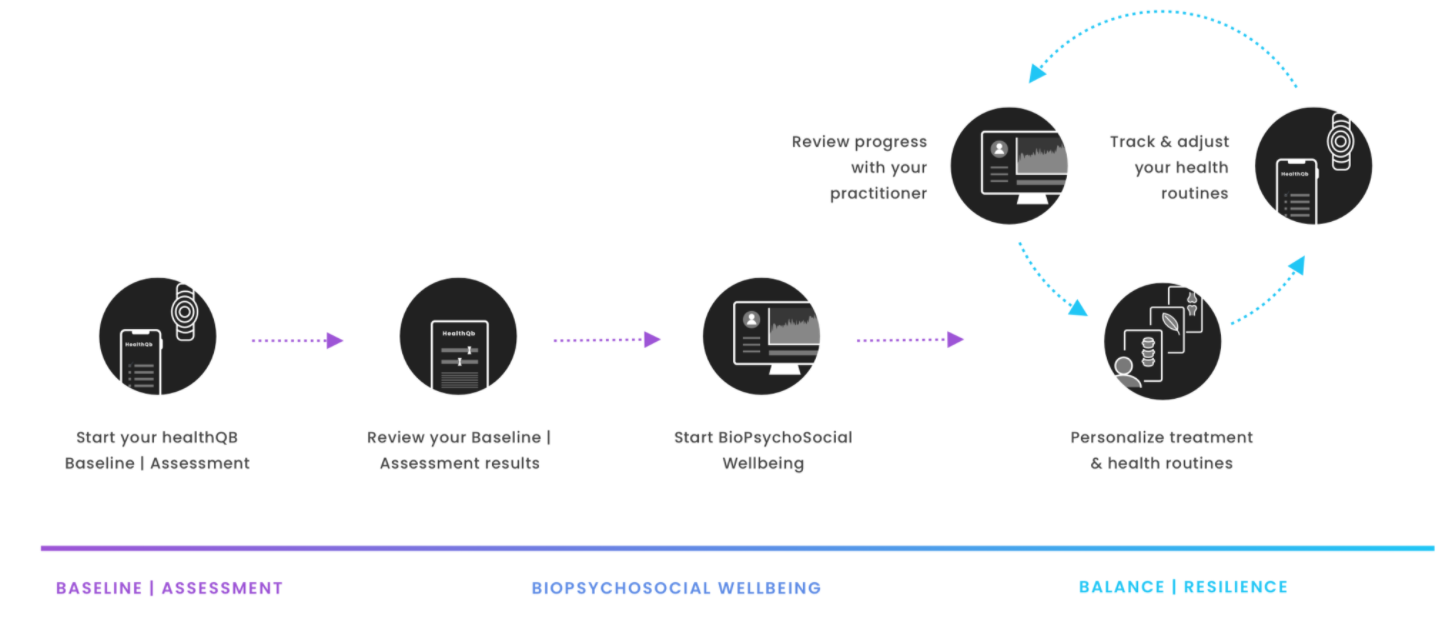
app helps users to reveal what is disrupting their well-being through a 21-Day Baseline Assessment. In a way that, it tracks users’ body vital signs during the night with advanced wearable technology. During the day, it discovers the disruptions with a quantified wellbeing™ software. After 21 days, It shows users how their nervous system and well-being are connected. The quantified wellbeing software guides users in managing their nervous system and helps them with mental health, sleep health, resilience, and awareness. HQB has developed a preliminary product (BPSQ v1) that provides Allied, Complementary & Alternative health practitioners with:
(1) a bio-psycho-social assessment and baseline,
(2) remote monitoring, and
(3) ongoing assessments for measuring treatment & intervention effectiveness, for their clients or patients who seek treatment for chronic or persistent discomfort or pain.
We have done the user research in order to obtain the following goals in two phases.
Phase 1 Objectives:
– Discover the practitioners’ and clients/patients’ respective user journeys using BPSQ v1.
– Identify & prioritize the practitioners’ and clients/patients’ pain points using BPSQ v1.
– Discover & prioritize the unmet needs of the practitioners and clients/patients using BPSQ v1.
– Identify & prioritize the benefits that BPSQ v1 provides to practitioners and their clients/patients.
Phase 2 Objectives:
– User flows (patients & practitioners)
– User journey
– Get feedback from participants on high fidelity prototypes
Participants Phase 1, 2:
5 practitioners working with clients/patients with chronic or persistent discomfort or pain
5-10 clients/patients with chronic or persistent discomfort or pain under treatment with the selected practitioners.
Research Methods:
Required use of product: The patient participants were willing to use BPSQ v1 for the duration of (a) the baseline assessment (3 weeks), including the participation in a baseline assessment meeting between practitioner and client/patient, and (b) at least one month of tracking subsequent to reviewing the baseline assessment report.
Interviews: Bi-weekly zoom Interview with patients and practitioners separately (45-60 min each).Practitioners only went through one round of interviews regardless of how many patients they oversee in the study.
Diaries: Weekly experience sampling/audio diary with patients (10-15 min)
We mainly did some user testing to investigate if people need the solution that we are working on and get some enahcment feedbacks.
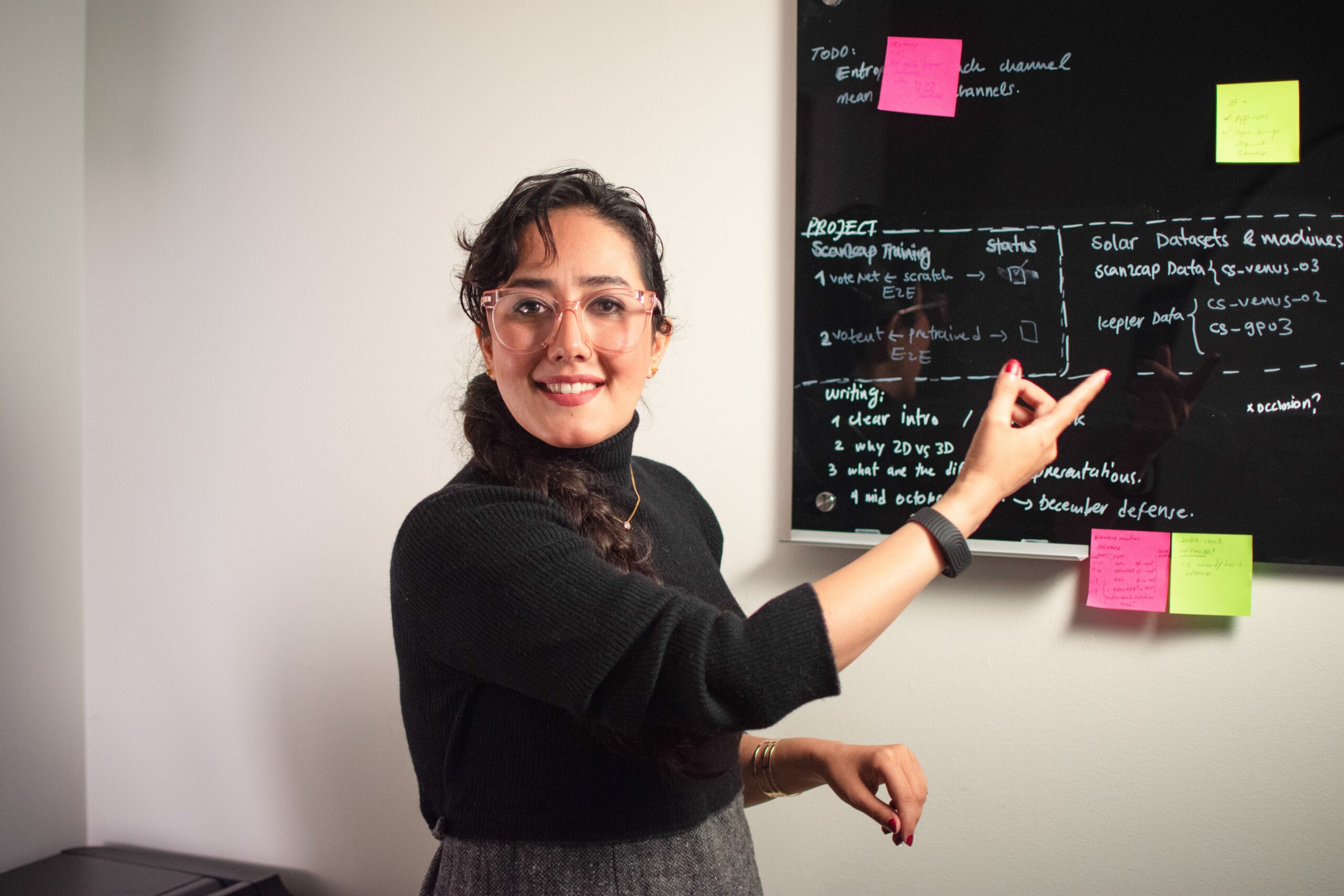
Design & Wireframing
In the design phase, we should make sure that there are no broken interactions. We did the Low-fidelity (lo-fi) and High-fidelity (hi-fi) prototyping in two phases. For the lo-fi, we aimed to check and test functionality rather than the visual appearance of our product. Therefore, we considered only some of the visual attributes and key elements of the content of the final product. After several meetings on lo-fi (s), we made sure that the flow and process is correct and not broken, we move forward to hi-fi prototyping.
After a solid understanding of what we are going to build and we need to either test it with real users or get final design approval from the HealthQB CEO, we create the hi-fi wireframes as similar as possible to the final HQB product that will appear in AppleStore. In this part, we have concentrated on realistic and detailed design — all interface elements, spacing, and graphics look just like a real app or website as well as the real content. In HealthQB, because we had a few questionnaires to be designed in the app, we got some help from a content specialist in order to check our app contents UX-wise.
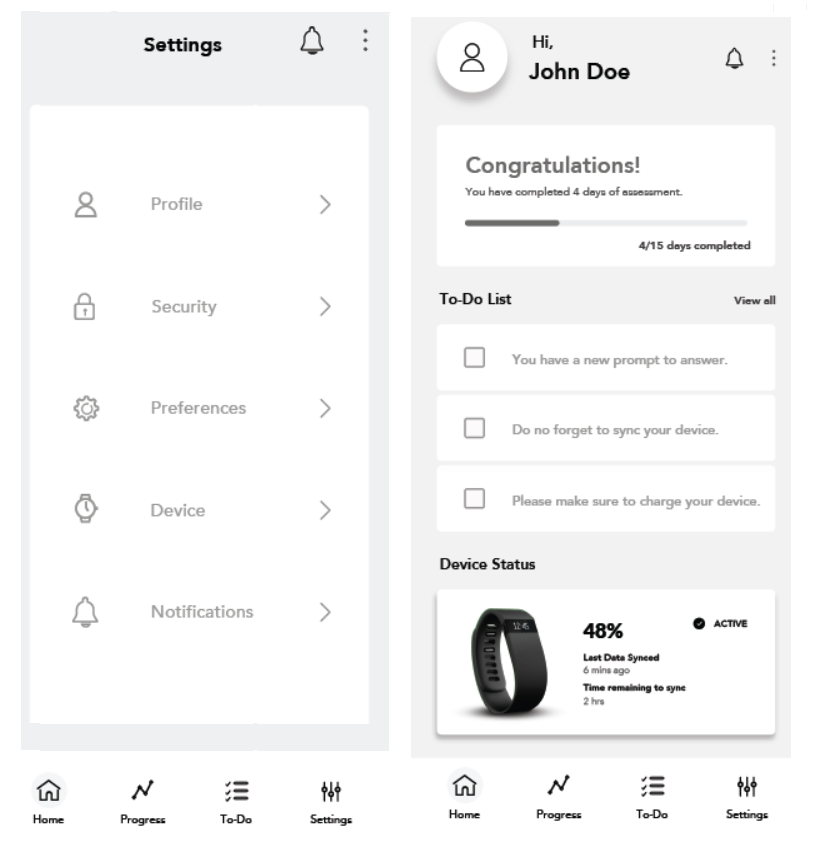
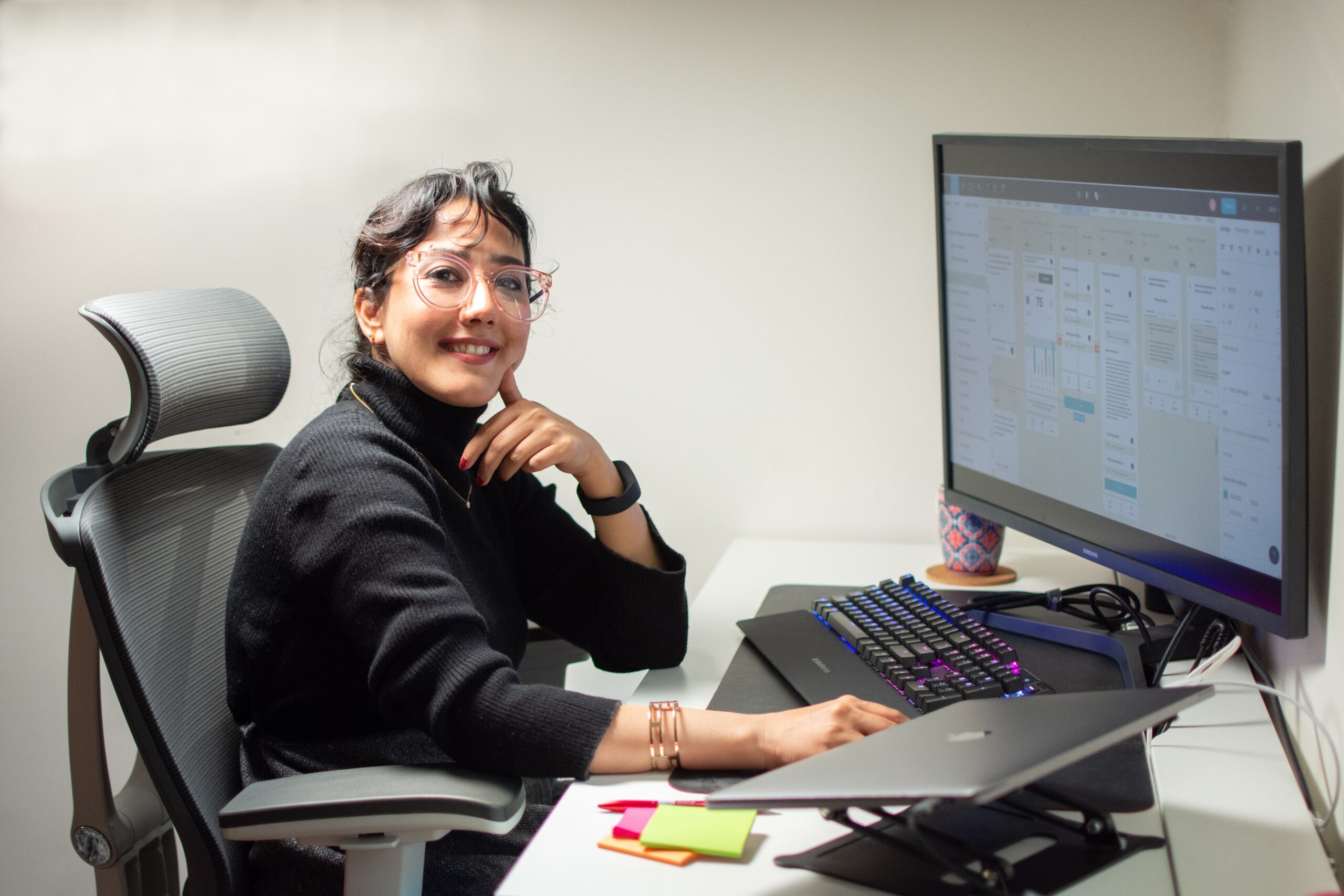
Evaluation & Testing
We have not started the final end user evaluation phase yet but we have planned two phases user evaluation. The main goal is to to assess the utility of HealthQB idea and to understand how users (practitioners & patients) interact with the app.
Methodology:
Methods consisted of A/B testing and usability testing with tasks written out to be followed by users. For onboarding testing, we applied observation and semi structured interviews.
User Testing Tasks (Examples)
Task 1: what do you do currently to overcome your chronic pain?
Task 2: Can you understand this intervention/recommendation in 20 secs.
Task 3: Please Tap on areas that you are stuck in the app.
Task 4: Here you see three prompts, please read them to see if they are unclear or confusing.
